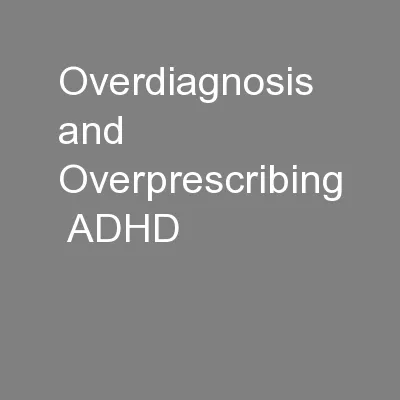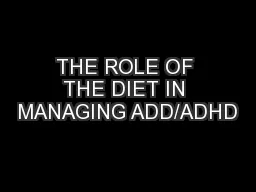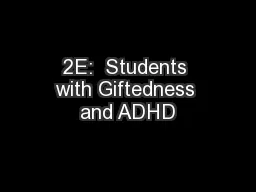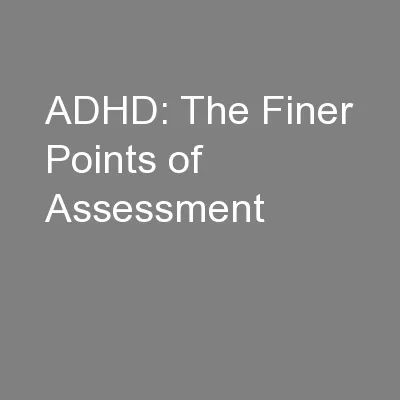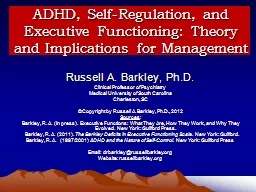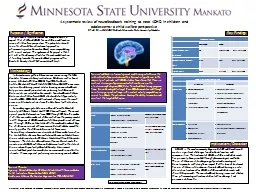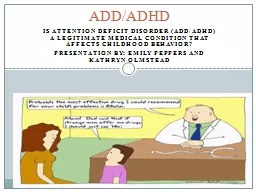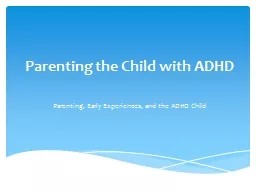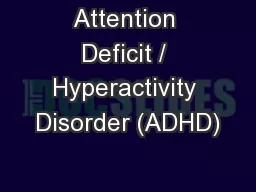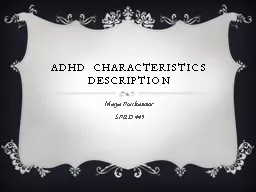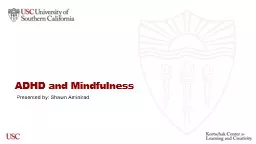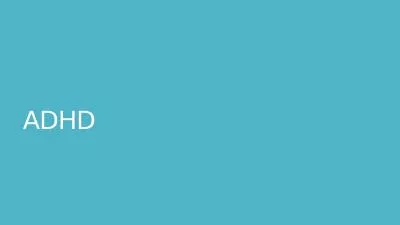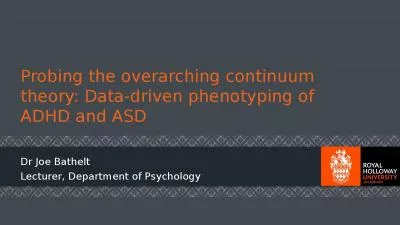PPT-Overdiagnosis and Overprescribing ADHD
Author : cheryl-pisano | Published Date : 2016-07-19
Diagnosed and treated with medication Diagnosed but should seek other alternatives ADHD does not actually exist Photo credit Corbis One of the most common childhood
Presentation Embed Code
Download Presentation
Download Presentation The PPT/PDF document "Overdiagnosis and Overprescribing ADHD" is the property of its rightful owner. Permission is granted to download and print the materials on this website for personal, non-commercial use only, and to display it on your personal computer provided you do not modify the materials and that you retain all copyright notices contained in the materials. By downloading content from our website, you accept the terms of this agreement.
Overdiagnosis and Overprescribing ADHD: Transcript
Download Rules Of Document
"Overdiagnosis and Overprescribing ADHD"The content belongs to its owner. You may download and print it for personal use, without modification, and keep all copyright notices. By downloading, you agree to these terms.
Related Documents

